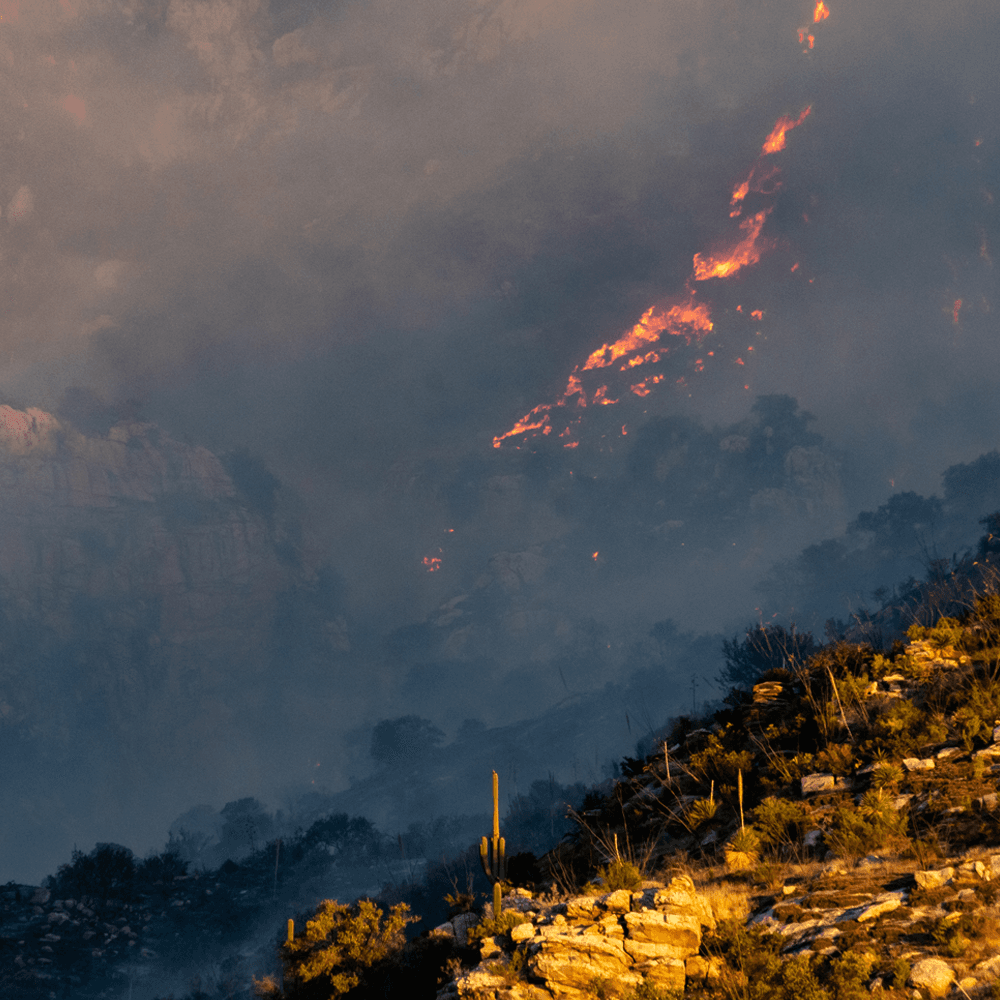AMWUA Blog
BY: AMWUA StaffWildfires impact our watershed and the quality of our water

Summer in Arizona has arrived and as temperatures soar, so do the number of wildfires in our State. And with our extreme drought conditions, this year’s wildfire season is expected to be more severe than the last, meaning we all need to use extra caution when enjoying the diverse outdoors across Arizona.
Wildfires can devastate many things, but many people do not realize that wildfires can directly impact our water in the Valley. When wildfires destroy forest vegetation, they leave behind large amounts of ash, heavy metals, organic materials, and sediments flowing into rivers and accumulating in reservoirs.
North and east of the Valley is the 8.3 million-acre watershed that channels the snowmelt and rainfall into streams, creeks, and the Salt and Verde Rivers that flow into Lake Roosevelt and other Salt River Project (SRP) reservoirs, which is one of the AMWUA cities’ sources of water.
The health of this watershed is critical to life in the desert. And Arizona’s forests are no stranger to fire. According to SRP - since 2002, more than 2.9 million acres of forests in or around the Salt, Verde, and East Clear Creek watersheds have been burned by wildfires, including fires such as the Rodeo-Chediski and Wallow fires.
A healthy forest acts as a storage and filtration system. In the winter, the canopy prevents the snowpack from melting too fast. Slowing the rate at which the snow melts provides the Valley with a steady water supply when we need it the most – in spring and summer. The aftermath of scorched landscapes causes a breakdown in the natural storage and filtration the forest once provided. Burned forests expose snow to excessive sunlight, causing it to melt more quickly and increasing the likelihood of floods. Waste from runoff settles at the base of the dams, reducing reservoir capacity and affecting water quality.
The AMWUA cities have long recognized the critical connection between the watershed and the Valley’s water supply. They have contributed funding for continuing efforts by SRP, the Nature Conservancy, and others to protect the watershed and reduce the risk of catastrophic fires.
While those efforts are essential to keep our forests healthy, we all need to do our part to protect our forests by practicing care outdoors, in our State Parks , and even right at home. Our diligence will protect our valuable forest areas and will ensure the sustainability of our quality water supplies. So please enjoy Arizona’s great outdoors but use extreme caution and avoid activities and behaviors that can spark these damaging fires.
To print or save this week's blog, a PDF version is available HERE .
Watch SRP’s six-part video tour of the Salt and Verde River Watersheds to learn more.
For over 50 years, the Arizona Municipal Water Users Association has worked to protect our member cities’ ability to provide assured, safe, and sustainable water supplies to their communities. For more water information, visit www.amwua.org .
